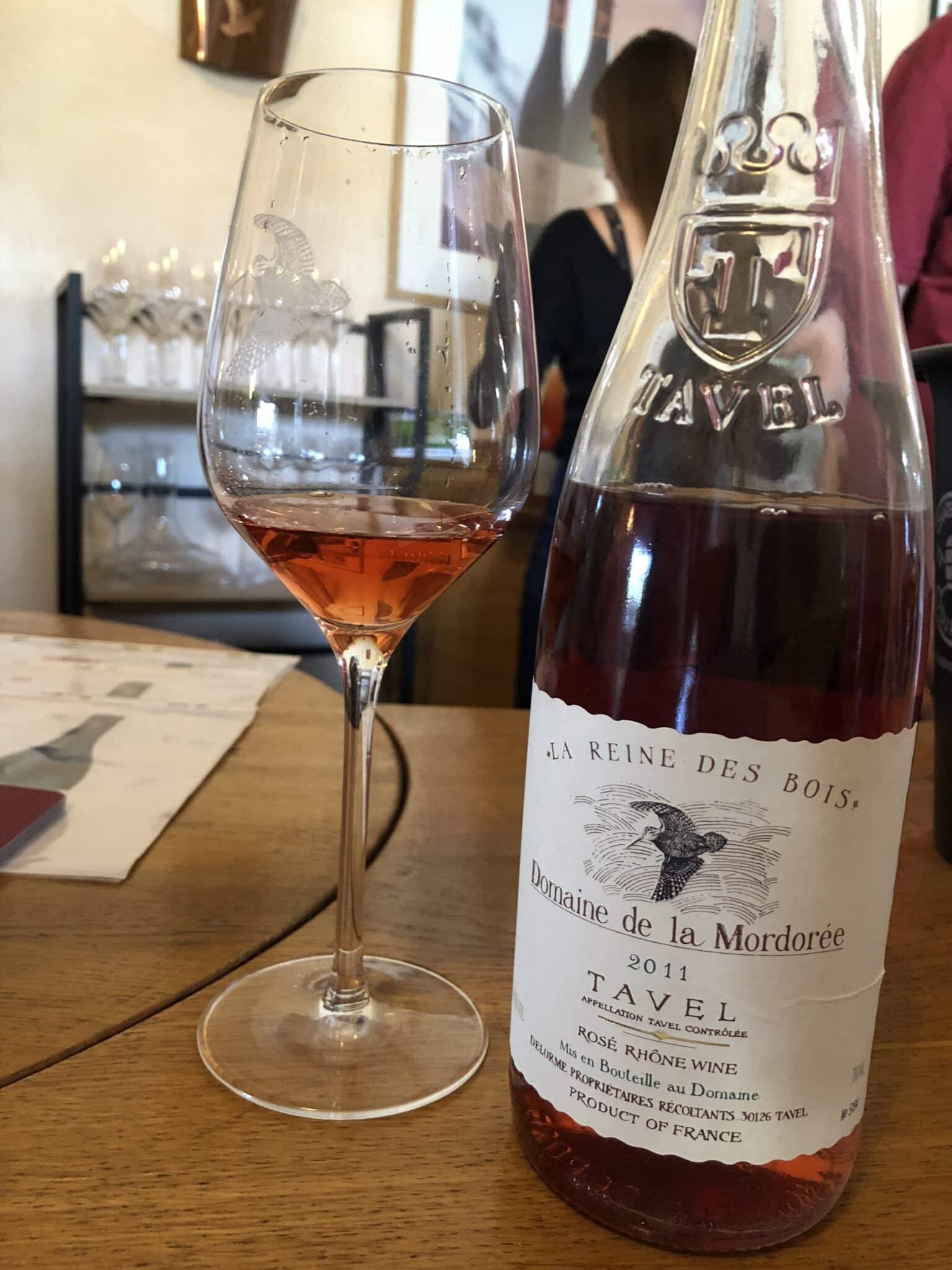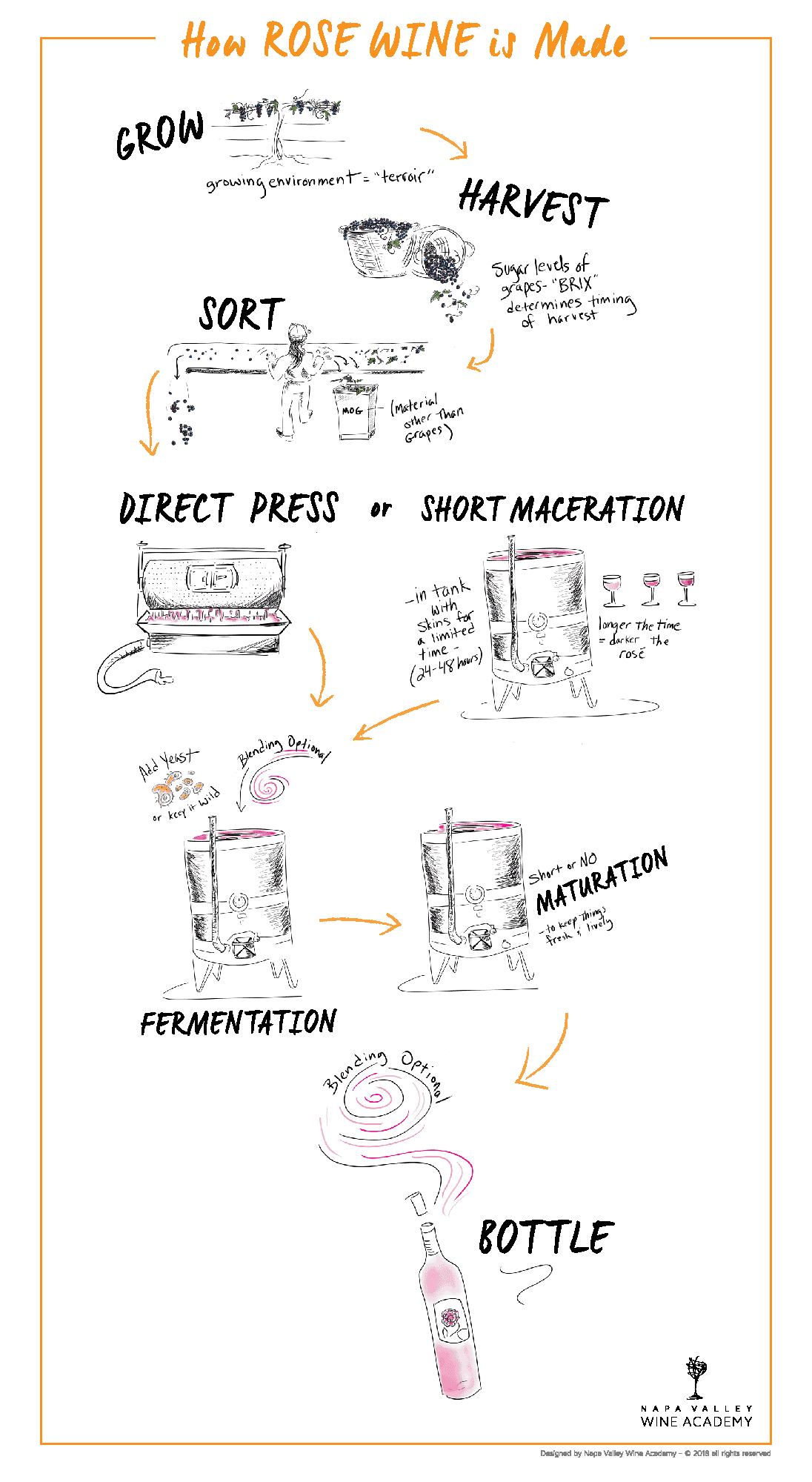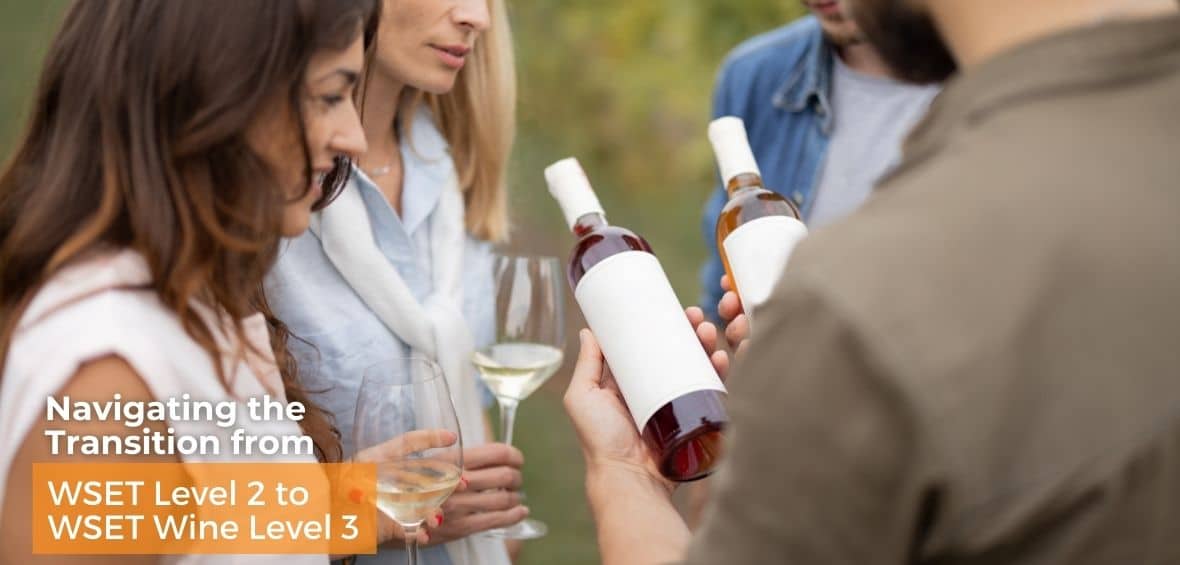From direct pressing and short macerations to the Saignée method and blending, this guide explores how rosé is produced around the globe.
by Nikki Goddard
Made all over the world, from a vast array of grape varieties, and with several varied techniques, the colors, aromas, textures, and flavors of rosé wines can differ significantly from one producer, region, or grape to the next.
Winemakers commonly use four different methods to produce rosé wine:
Direct Pressing
- Grapes typically used to make red wine are crushed and then
- Yields elegant, pale-colored rosés, also known as “vin gris.”
- Popular for light red varieties—Pinot Noir is commonly used in California and Oregon, while Grenache and Cinsault are often used in France, particularly in Provence.
- Grapes typically used to make red wine are crushed and then
Drawing Off (a.k.a. Short Maceration)
- Process begins identically to red winemaking, but 6 to 48 hours after fermentation begins, the juice is removed from the skins (to halt color extraction) and continues to ferment at a cool temperature to retain freshness.
- A common method, nicely exemplified by wines from Tavel and Languedoc-Roussillon in southern France, where rosé wine is valued as highly as red or white.
Saignée (“bleeding”)
- Nearly identical to drawing off, but only some of the juice is separated for rosé production, while the rest continues fermenting with the skins to produce red wine.
- In these cases, rosé is merely a by-product of red wine production, and allows the winemaker to produce a more highly concentrated red wine.
- Generally considered inferior to dedicated rosé production—where grapes are specifically grown to make rosé—because the grapes are harvested at optimum ripeness for red wine. This means the resulting rosé has less acidity and delicacy.
- Widely practiced in regions where fine red wine is made, like Napa and Sonoma.
Blending
- After fermentation, a white wine is supplemented with a bit of red wine to achieve a pink hue.
- Often used to produce rosé Champagne, but prohibited elsewhere in the EU.
- Sometimes used in the New World to make simple, inexpensive, and fruit-forward rosé in bulk.
Oak, while rarely used in rosé winemaking, is not unheard of. It should be noted, however, that it is significantly more likely to see neutral oak used to add texture than new oak that would mask the bright, fresh fruit flavors of rosé.
Most commercially made rosés fall somewhere between bone dry and lightly sweet. Popular rosé-producing regions typically have a signature style:

France
- In Provence (home to many of the world’s finest elegant, dry rosés) and the Languedoc, Grenache, Cinsault, Syrah, Carignan, and Mourvèdre reign supreme.
- Drier, zestier rosés from Cabernet Franc, Gamay, Pinot Noir, Côt, and Grolleau can be found in the Loire Valley.
- Merlot-based rosé from Bordeaux often has sweeter, jammier fruit.
Italy
- In the northern Veneto region, Corvina-based rosés are light and delicate.
- In central Italy, tart, food-friendly Tuscan Sangiovese is wildly popular, as well as bold, juicy Montepulciano rosé from Abruzzo.
- Richly colored Primitivo and Negroamaro rosés are made in the south.
- Perhaps the finest of all is the savory, mineral-driven Etna Rosato, grown on Sicily’s Mount Etna.
Spain
- Easy-drinking, fruity, deep pink examples found throughout the country, often made from Tempranillo or Garnacha.
- The most serious, age-worthy rosés are made in Rioja, from these grapes plus the white variety Viura.
California
- Fruity yet elegant Pinot Noir rosé is very popular throughout the state, especially in Sonoma, Carneros, the Central Coast, and Santa Barbara County
- Other popular grapes include Rhône varieties like Syrah and Grenache.
- Commercially popular sweet rosés like White Zinfandel are made in bulk.
While rosé is often thought of as easygoing and playful, the category has much more range than most consumers give it credit for. To learn more about the process of winemaking and the many varied styles of wine produced around the world, enroll in a WSET course today.


















